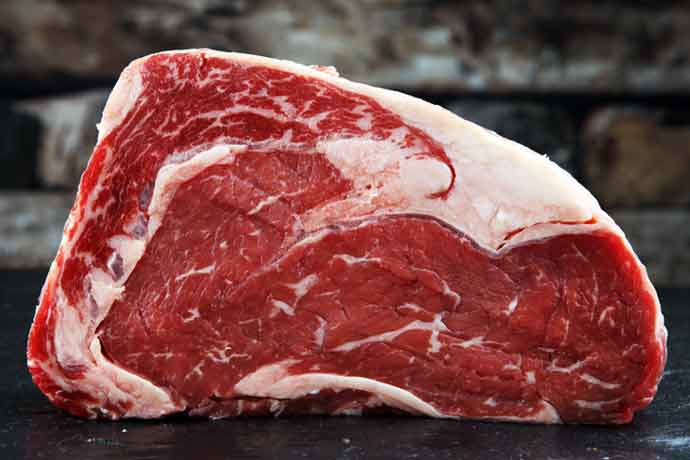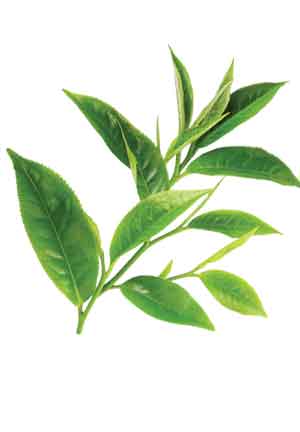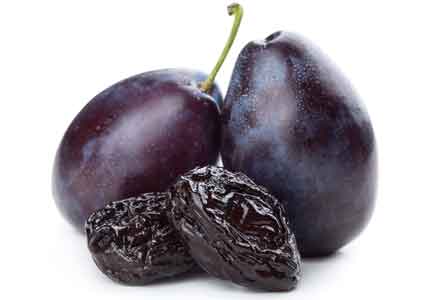Up to 40 percent of food in the US is never eaten, but at the same time, one in eight Americans struggles to put enough food on the table, according to the Natural Resources Defense Council, New York, an international nonprofit working to make America’s food system more efficient and less wasteful. Meat and poultry processors can do their share through the use of shelf-life extending and food safety technologies.
Food loss refers to product that gets spent in the supply chain. This is at any point from farm to market, and may occur during handling, storage or distribution. Food waste refers to the discarding of food that is – or once was – safe and nutritious for human consumption. This includes meat and poultry that may be visually unappealing because of color loss, as well as product that gets discarded because it’s beyond the sell-by date, often interpreted as being spoiled product.
Fresh cut and wrapped meat and poultry spoils quickly, especially if shelf-life extending technologies are not incorporated. That’s because meat and poultry are nutrient-dense substrates with high-water activity, making them a target for microbial growth. Spoiled product must be discarded because it is organoleptically unacceptable, making spoilage one of the greatest forms of food waste.
Processors have a toolbox of ingredients to assist with reducing waste while ensuring product safety. There are ingredients that retard oxidation, thereby improving color and flavor. There are also various approaches to slowing the growth of spoilage microorganisms while also destroying pathogens. Of course, starting with quality raw meat and poultry and maintaining clean and well refrigerated manufacturing, storage and distribution environments is paramount.
It’s all about appearance when it comes to purchasing fresh meat and poultry. According to “The Power of Meat 2018” study from San Antonio-based 210 Analytics LLC, in partnerhip with Cryovac, a part of Sealed Air’s Food Care Division, 34 percent of consumers sift through meat packages every time they shop, and 40 percent do so frequently. Product appearance is the No. 2 factor when selecting and buying meat and poultry. The No. 1 consideration is price.

“Only appearance – the consumer expression of perceived quality – comes close to the importance of price,” says Anne-Marie Roerink, principal at 210 Analytics. “No one wants the last package, just like no one wants product that doesn’t look optimal,” she says. “It’s all about products that consumers know will last them two to three days post purchase, in case they don’t get around to eating it right away. You see the same exact behavior in packaged salads. The bag with the earlier sell-by date stays up front as consumers reach to the back to find that bag with the two or three extra days and extra green looking lettuce.”
When it comes to appearance, fresh beef should have a bright cherry-red color, while lamb is a darker cherry-red. Raw pork has a grayish-pink hue, while cured pork, such as ham and bacon, should be pink. Raw poultry can vary from a bluish white to yellow, with a hint of pink, with color closely associated with the bird’s diet.
The reddish-pinkish color associated with most product is formed when myoglobin in the meat is exposed to oxygen. This converts the myoglobin (blue) to oxymyoglobin (red). Think how enclosed veins are blue and exposed blood is red. Different species of meat have different concentrations of myoglobin in their blood, which is why there are varying intensities of red in meat.
Beef, for example, has about four times as much myoglobin as pork. With poultry, the white meat is virtually void of myoglobin while dark meat gets its name because of its myoglobin content.
There are many technologies to assist with slowing color loss. This includes modified atmosphere packaging, reducing exposure to in-store lighting and addition of ingredients that stabilize desirable color. There are conventional generally recognized as safe (GRAS) additives and clean-label options.
One way to stabilize color is to manage pH. In cured meats, a low pH is best while in fresh, non-cured meats, a higher pH is desired. Depending on the ingredient and usage level, pH adjustments may be accompanied with a change in flavor. Lowering pH may create an acidic bite while increasing pH can be bitter.
Specialty phosphates are the exception. Selection and application of the proper phosphate can provide a desired pH, which in turn, helps stabilize color. Phosphates are generally used at very low addition rates, no more than 0.5 percent.
When it comes to developing and preserving desirable cured pink color in bacon, ham and select sausages and deli-style meats, processors have historically relied on curing salts, a source of nitrates and nitrites. These chemicals keep meat red by bonding to the myoglobin and acting as a substitute for oxygen. They also are responsible for adding a zingy, tangy flavor to meat. Curing also breaks down and tenderizes tough protein fibers, resulting in a compact yet tender texture.
While these traditional color stabilizers are still widely used in the industry, many processors are turning to plant and spice ingredient systems with color stabilizing functions to meet consumer demand for clean, simple, natural ingredients.
Some ingredients are capable of contributing desirable cured color and flavor to uncured cooked meats. Celery juice, for example, is an inherent source of nitrates and nitrites. Some spice blends allow for cured color with very low residual nitrate and nitrite content.
Rosemary and green tea extracts are another example. These two extracts positively impact the appearance, taste and quality of meat and poultry. Both contain phenolic compounds that function as antioxidants, preventing oxidative breakdown of meat pigments by being oxidized themselves.
The main difference between the two plant extracts is that green tea extract has a lower negative flavor contribution to the final product. Thus, using a lower level of rosemary extract in combination with green tea extract allows the manufacturer to increase the natural plant extract usage rate, often resulting in a blend that works better in the meat than using rosemary alone, according to a study conducted at the Univ. of Nebraska-Lincoln.
Acerola cherry extract is also proving to be a highly effective ingredient in meat and poultry. Extracted from the namesake wild plant, acerola extract contributes the antioxidant vitamin C. Acerola extract, blended with rosemary and green tea, has been shown to delay both lipid and myoglobin oxidation.
Some fruit ingredients have also been shown to assist with color in fresh and cooked meat products. Plum concentrate, for example, provides an extra layer of protection for preserving or enhancing color. It does not stop oxidation, but will help improve appearance. In some processed meat applications, the rich deep brown color of dried plum can replace the need for caramel coloring.
Fatty acid oxidation
In addition to myoglobin oxidation, there’s also lipid oxidation to consider. Fatty acid breakdown is more prevalent in cooked meats, as heat initiates the breakdown of polyunsaturated fatty acids (PUFA) present in such products. These fats are highly susceptible to oxidation, which produces unwanted flavor changes in the final product.
For example, oxidation can produce what has become known as warmed-over flavor (WOF), which are odors and flavors described as stale, painty or rancid. WOF has long been recognized as one of the primary causes of quality deterioration in cooked, refrigerated and pre-cooked, frozen meat products.
There are many other microbial-inhibiting additives – natural and traditional chemical – available for extending the shelf life of meat and poultry, while also ensuring its safety.
The most common solution is the addition of antioxidants, which protect PUFA from oxidation by sacrificing themselves to the oxidation process. Artificial preservatives such as butylated hydroxyanisole (BHA), butylated hydroxytoluene (BHT) and tertiary butylhydroquinone (TBHQ) function as antioxidants and have long been the standard to ensure an economically sensible shelf-life for fully cooked and packaged meat products.
These ingredients are still widely used, but many processors are exploring the growing number of more label-friendly options in the marketplace. This includes tocopherols, a class of vitamin E with powerful antioxidative properties. They have long been used as a natural shelf-life extender in many products and have application in raw meat. Many of the plant and spice extracts that retard myoglobin oxidation will also slow lipid oxidation.
Microbial deterioration
While red and pink color is an important visual cue to freshness, quality and deliciousness, other changes in appearance – namely spotty discoloration and slime production –may be associated with microbial spoilage by non-pathogenic bacteria. The tell-tale sign comes once the package is opened. Fresh meat and poultry should not smell, so any off notes are typically an indicator of spoilage. Pathogenic microbial growth, on the other hand, can often go undetected by the senses.
Salting is the original approach to reducing microbial growth in meat and poultry. Salt draws water out of microbial cells, effectively destroying them. Today salt remains a critical ingredient in extending the shelf life of meat, but is often used in conjunction with other ingredients. Salt may be injected into whole muscle via a brine solution or blended in as a dry ingredient in processed meats.
 There are many other microbial-inhibiting additives – natural and traditional chemical – available for extending the shelf life of meat and poultry, while also ensuring its safety.
There are many other microbial-inhibiting additives – natural and traditional chemical – available for extending the shelf life of meat and poultry, while also ensuring its safety.
Organic acid salts are some of the most effective antimicrobial agents. They are basically organic acids, such as propionic acid, acetic acid and citric acid, buffered, also known as neutralized, with a conjugate base.
Fermentation technology allows for the development of optimized-performance ingredients containing organic acids, sugars and peptides. Through carefully controlled fermentation processes, depending on the microorganism and the substrate, varied fermentates are produced. These may control spoilage and pathogenic microorganisms.
Vinegar-based ingredients are often buffered to a pH similar to the application matrix in order to not impact color or taste. Some suppliers offer vinegar combined with other active ingredients for additional product quality benefits.
Rosemary and green tea extracts are also combined with buffered vinegar for a multi-prong approach to extending shelf life by addressing color retention and food safety with one ingredient. Often times when combined together, the ingredients work synergistically, allowing for a lower usage rate.
Another approach to inhibit pathogen growth is to introduce competing microorganisms into the system. Such good cultures have long been used to protect food by reducing the acidity of the food, which in turn inhibits bad bacteria fromgrowing.
With a growing toolbox of ingredients to extend product shelf life, while also ensuring safety, meat and poultry processors are equipped to assist with reducing food waste.


